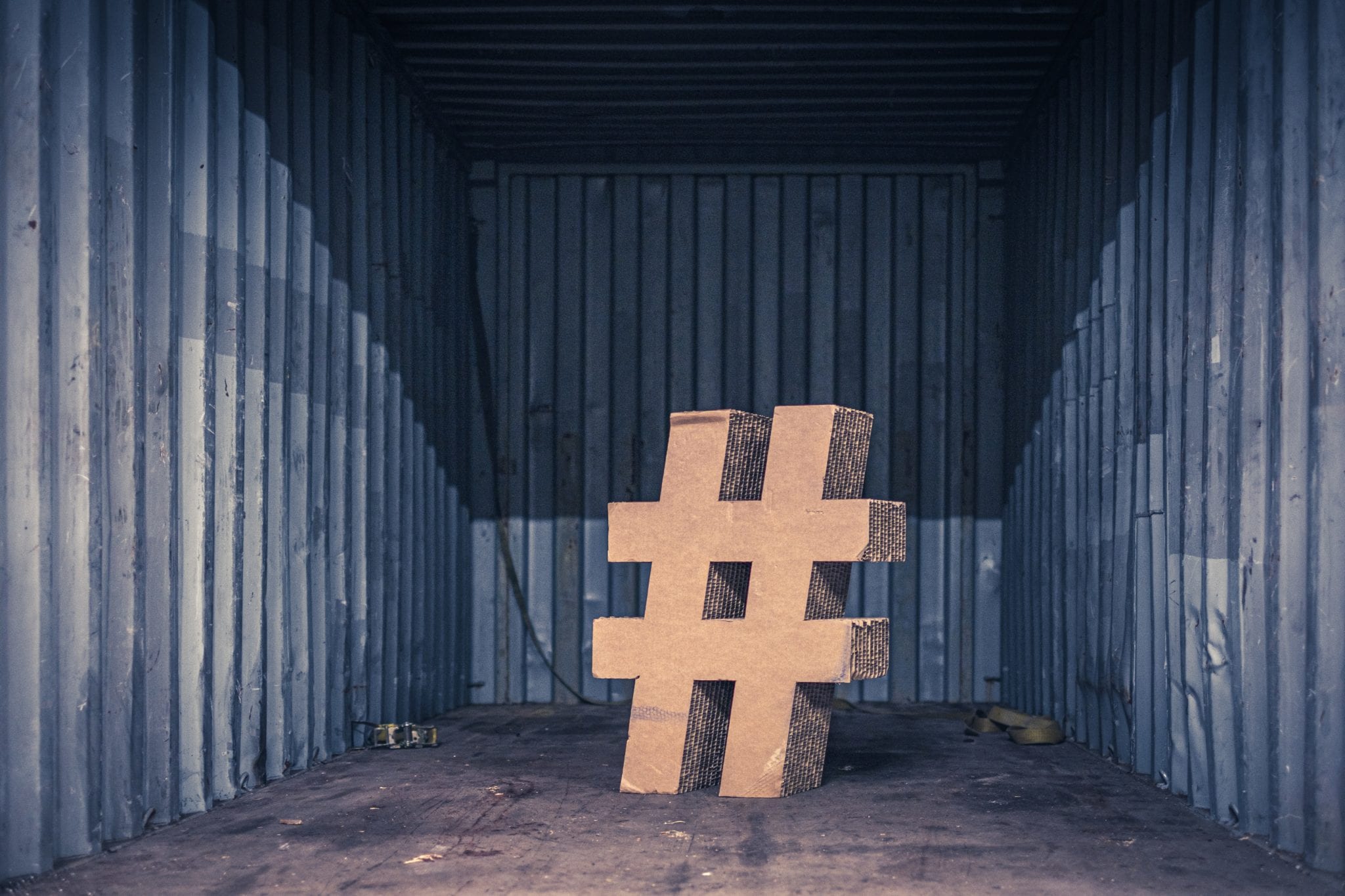Even if you’re totally new to Twitter, chances are you’re aware of #hashtags.
From trending topics to billboards and beyond, hashtags have become a staple of not only social media but also advertising at large.
Unfortunately, many marketers don’t tap into the full potential of hashtags. When used the right way, Twitter hashtags can help you do the following:
- Build brand awareness
- Uncover important discussions among your customers and target audience
- Track the success of your marketing campaigns
Learning the best practices of hashtags is a must-do marketers looking to make the most of Twitter. This quick guide will teach you everything you need to know.
What are Twitter Hashtags, Anyway?
Simply put, Twitter hashtags represent a way for users to organize, categorize, and discover tweets.
Denoted by the pound key (#), a hashtag signals what a piece of content is about or can be used by brands to put their sort of creative stamp on a tweet. Users can include multiple hashtags in a single post.
For example, a tweet related to digital marketing might use the #InternetMarketing hashtag or give a shout-out to the #MarketingTwitter community.

Users can then click on hashtags to find other tweets related to that tag. For example, the #Canva hashtag contains tons of examples of Canva users talking about the tool, sharing their creations, and more. When you add a hashtag to a tweet, you essentially increase its searchability on Twitter.

Keep in mind that many hashtags are also related to breaking news and current events (think: #Euro2021). These sorts of tags make it easier for users to follow updates and ongoing developments in real-time.
In short, Twitter Hashtags serve as a crucial feature for discovering relevant tweets and organizing your own.
“What are Some Examples of Twitter Hashtags?”
If you’re a bit confused or overwhelmed by hashtags at first glance, we get it.
Because you can create a hashtag for just about anything. Seems like a bit of a free-for-all, right?
Below are some examples of the most common types of Twitter hashtags (and why brands use them).
General Topics and Industry Hashtags
Examples: #crypto, #ecommerce, #unicornhair
For starters, consider how hashtags are used to highlight discussions and communities.
Someone trying to figure out how to boost their search rankings could use the #SEO hashtag to find content or tips. Meanwhile, users might search #unicornhair tag for inspiration or recommendations on hair dye brands or techniques for coloring hair.

The more general a hashtag is, the more popular it is. This means good news for users looking for content, but signals more competition for brands and accounts looking to trend within a particular category. This is why coupling your tweets with general and more specific hashtags is a smart move (see the example above).
Event Hashtags
Examples: #contentchat #decisionday, #oscars
If there’s a live event going on, there’s a non-zero chance there’s a hashtag for it.
From sports and award shows to elections and beyond, event hashtags make it easier for folks to follow the action in real-time.

However, note that event hashtags aren’t reserved just for real-world happenings. These types of tags can also be used to organize digital events and meetups (such as the freelancer community’s weekly #FreelanceChat).
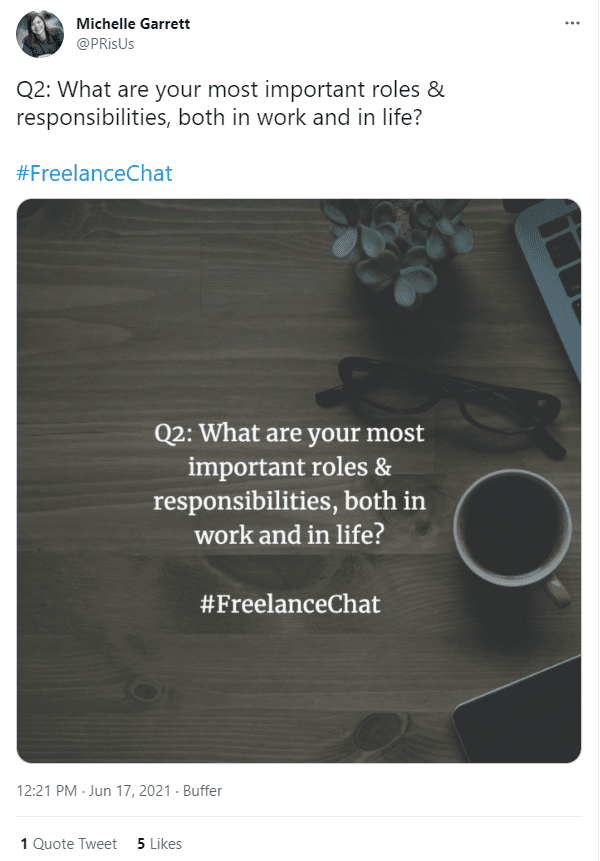
Branded Hashtags
Examples: #GuitarCenter (Guitar Center), #SmellReadyForAnything (Old Spice), #elfingamazing (Elf Cosmetics)
These are hashtags that are “owned” by a specific brand. They can either be the brand’s actual name, a creative slogan, or the tagline for a marketing campaign.
Think of branded hashtags as creative trademarks. When someone uses a brand’s hashtag, they’re explicitly talking at or around that brand.
Branded hashtags are likewise a powerful tool for encouraging customers to share photos and content around your business. For example, beauty brands almost universally promote hashtags in their bios.

Trending Hashtags
Lastly, there are trending hashtags that are directly related to topics people are currently buzzing about. You can find these in Twitter’s #Explore tab or “What’s happening” sidebar.
Trending hashtags help keep people in the loop about current events but some trending topics are seemingly random.

Either way, they’re an awesome way for brands to piggyback on news or trending topics with a bit of creativity.
How Exactly Can Brands Use Twitter Hashtags to Grow?
Adding hashtags to any given tweet is a no-brainer and a surefire way to increase its searchability.
But beyond organizing your content and making it discoverable, hashtags are massively useful to brands for the sake of promotion. Let’s look at some examples below.
Discover User Generated Content (Customer Photos and Reviews)
Twitter hashtags are a low-hanging means of promoting your brand and likewise build better relationships with customers. As noted earlier, brands often hype their branded hashtags as a way for followers to go back-and-forth with them. Check out how Morphe does it below:
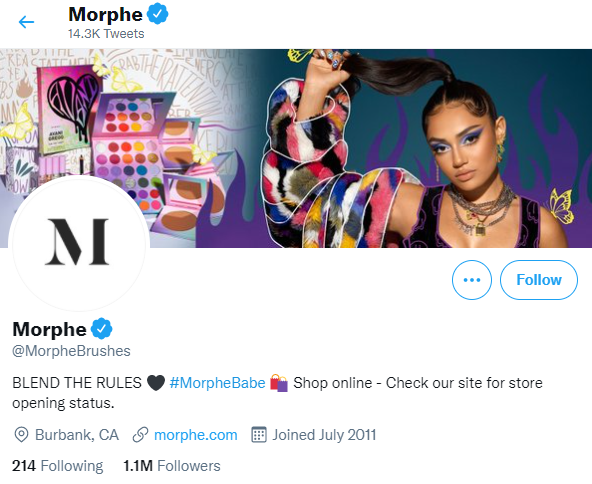
By tracking uses and mentions, Morphe can easily encourage followers to share photos featuring their products which the brand then retweets themselves. This drives more and more followers to do the same, creating a seemingly endless stream of marketing photos and user-generated content (UGC).
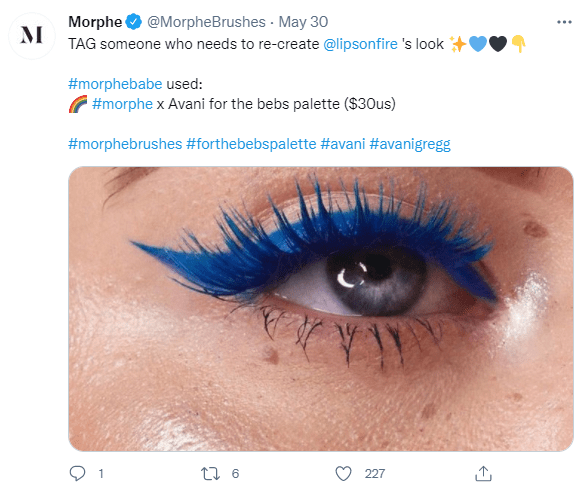
Hashtags can also be used to spot questions, comments, and reviews (both positive and negative). This gives brands a chance to engage with followers in a timely manner to capitalize on positive interactions. On the flip side, brands can make things right when customers have a problem.
Build and Support Communities
You’d be surprised at just how many communities exist on Twitter.
Marketing groups. Creatives. Investors. The list goes on and on.
Twitter hashtags serve as a way to catalog and contribute to industry conversations no matter what your niche might be. For example, there’s #MarketingTwitter for more general conversations and smaller groups like #DTCfam for direct-to-consumer brands.
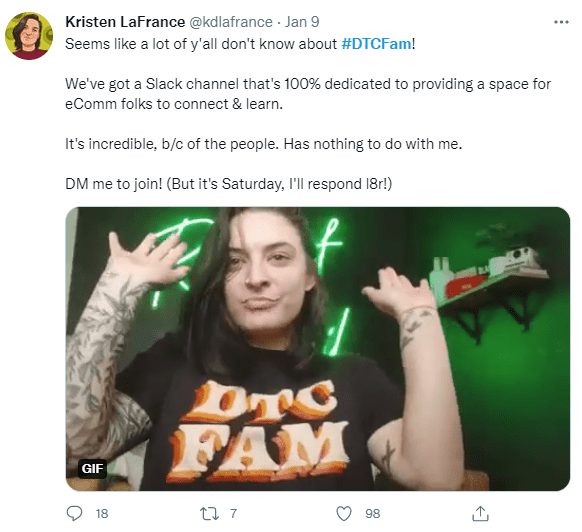
“Which Hashtags Should I Use, Though?”
Great question!
Remember that your goal is to reach your audience, so using relevant hashtags should be a top priority.
But with millions to choose from, where do you even start?
Keep in mind that Twitter will recommend existing Twitter hashtags based on terms type in a tweet. This can serve as a sort of gut-check for your hashtag ideas and let you know what’s already being used by your audience.
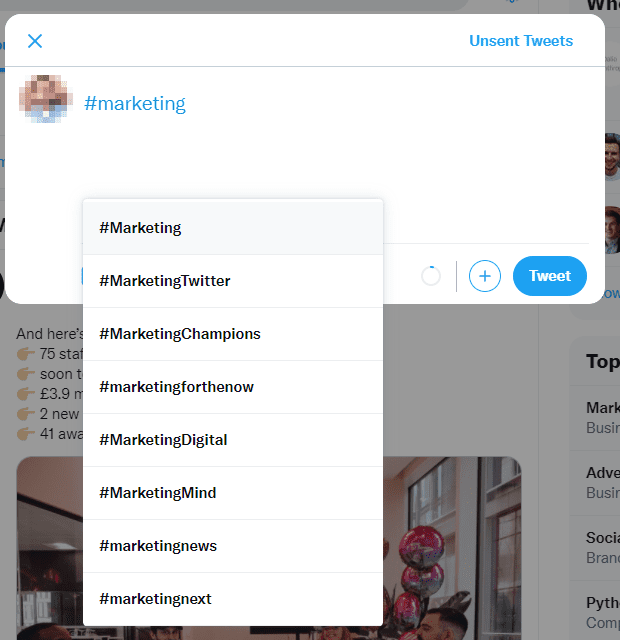
There are also third-party tools out there like Hashtagify that allow you to search for popular hashtags and related terms in your industry.
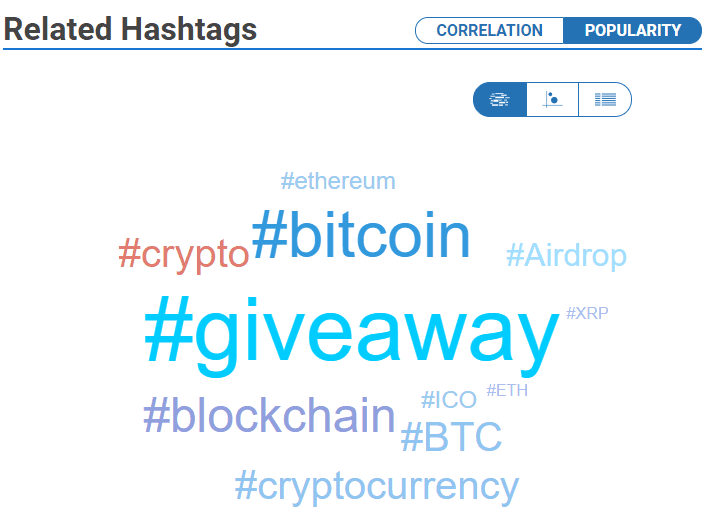
Chances are it’ll take a bit of independent hashtag research and trial-and-error to figure out which terms are best for your brand. When in doubt, look at existing communities and tags that others in your industries are already using.
3 Best Practices of Using Twitter Hashtags
To wrap things up, let’s review the three key best practices that brands should be aware of when it comes to hashtags on Twitter.
1. Pick the Right Amount of Hashtags Per Tweet
There’s plenty of debate and conflicting data on what’s “optimal” in terms of hashtag usage.
For example, Twitter themselves recommend using no more than two. That said, you don’t have to look hard for brands taking three or more hashtags on a tweet.
When in doubt, sticking to two or three is fair game for the sake of categorizing your posts without being spammy. Also consider that the right number of hashtags per tweet can be zero: not every post needs a hashtag!
2. Make Your Hashtags Easy to Read
Although tacking Twitter hashtags onto a post is easy, you don’t want to make the mistake of muddying up your posts with your tags. Some key pointers to make your hashtag-heavy tweets more legible include:
- Using “camel case” or “title case” (#LikeThis) for Twitter hashtags containing multiple terms
- Putting your hashtag(s) at the end of your tweet
- Coupling your hashtags together (especially if they aren’t at the end of a tweet)
The tweet below is actually a great example of all of these pointers in action:
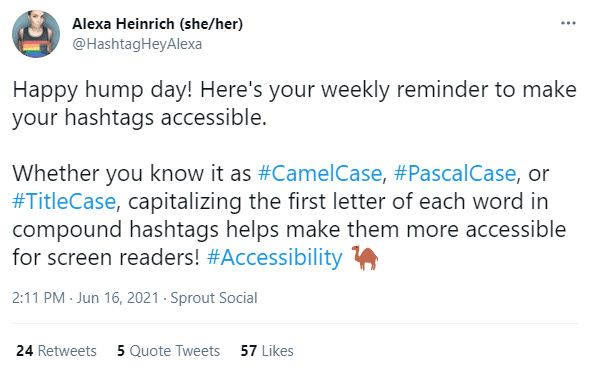
3. Track the Performance Over Your Hashtags Over Time
Hashtag tracking is extremely important, particularly for brands.
For example, let’s say you want to see which hashtags are the most popular among your target audience. Or maybe you want to know which of your own hashtags are crushing it in terms of uses and click-throughs.
Third-party tools can tell you a ton about your Twitter hashtag performance, much more than Twitter’s native analytics can. Such tools are not only helpful for analyzing your best tags but also helping you brainstorm new ones.
Are You Making the Most of Twitter Hashtags?
Hashtags are huge for brands on Twitter, granted you know how to use them.
Mastering #tags can help you not only tap into important conversations among your target audience but also discover new opportunities to promote your content. Sticking to the tips and best practices above can help you start building brand awareness via Twitter hashtags sooner rather than later.
And with that, happy hashtagging!
